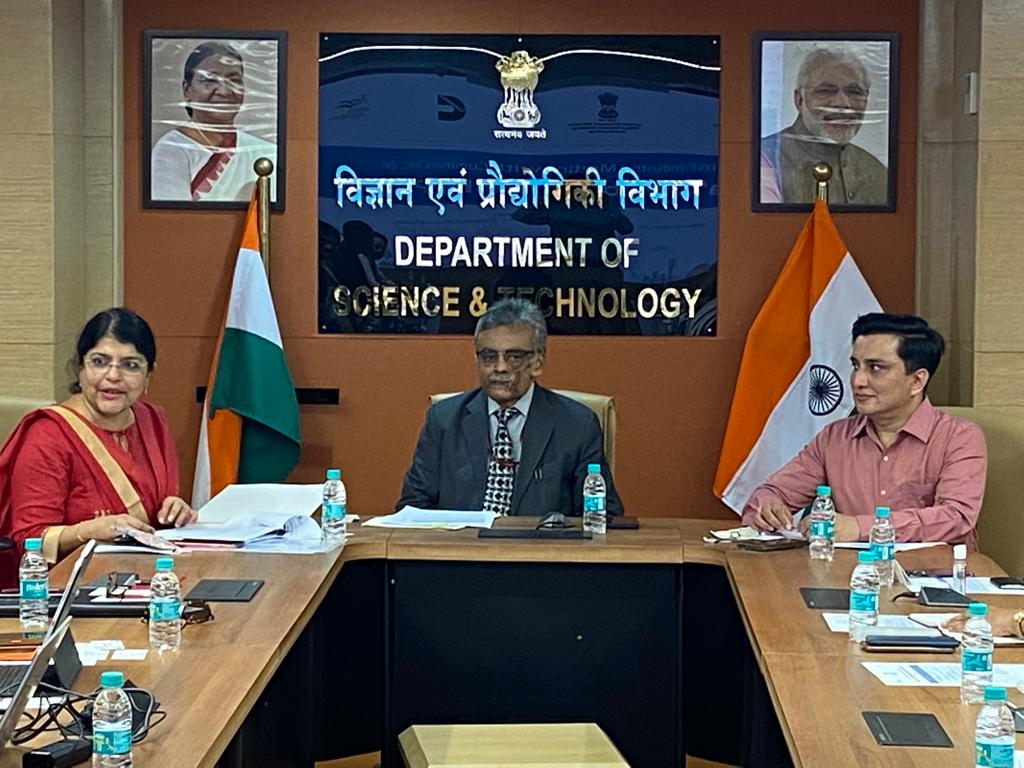The importance of hydrogen in attaining carbon neutrality by 2070, advances in hydrogen economy, as well as its challenges and opportunities were deliberated upon at a meeting to discuss the setting up of hydrogen valleys in India.
“The entire world is facing climate change and its impact. The challenge is how to address this issue. We have to come together to solve it as it cannot be done by an individual,” said Dr. Akhilesh Gupta, Senior Advisor, DST and Secretary, SERB (Additional Charge), while stressing on the importance of collaboration between public and private enterprises at the industrial meeting of the Department of Science and Technology (DST) with Cummins Inc.

“DST has a holistic approach on climate change and carrying out a range of activities on renewable energy, hydrogen, carbon capture utilization and storage, electric vehicles and also on two National Missions of climate change,” informed Dr. Gupta at DST-Industrial Meeting with Cummins Inc. on India’s Hydrogen Valley Platform.
He reiterated PM Shri Narendra Modi’s Panchamrit, a five action point to deal with climate change announced during the CoP26 summit to achieve carbon neutrality by 2070, and stressed on the importance of hydrogen in this.
The DST under the Clean Hydrogen Mission of “Mission Innovation” has set in motion the process of identifying and setting up at least 3 Hydrogen Valleys by 2030. Speaking about setting up the Hydrogen valleys in the country, Dr. Akhilesh Gupta said, “Cummins has experience in the field, and it could be useful for our collaboration”.
Tom Linebarger, Executive Chairman - Cummins Inc. USA & Co-chair-Hydrogen Council, presented an outline of the company’s activities and vision and highlighted the necessity of a hydrogen strategy for India.

Dr. Ranjith Krishna Pai, Scientist, DST made a brief presentation on Hydrogen Valley Platform, which is a global initiative to optimize the hydrogen demand and supply by onsite generation and utilisation to utilise renewable resources effectively, and water excess areas with geographical identity.
The H2 Valley’s objectives are to combine a complete hydrogen value chain (production, storage, and transportation) to reach critical scale and unlock learning curve effects. India has committed to facilitate the delivery of three clean hydrogen valleys in India by 2030.
The valleys will be set up in three phases.
- The first phase (2023-2027) of the project will develop, deploy, and demonstrate small-scale hydrogen valleys, which produce more than 500 tonnes of green hydrogen annually.
- The second phase (2028-2033) will involve upscaling of the hydrogen valleys with production of more than 5000 tonnes of renewable hydrogen per year.
The third phase (2034-2050) of the project will involve low-carbon hydrogen technologies being adopted in hard-to-decarbonise sectors, such as cement and steel.






























